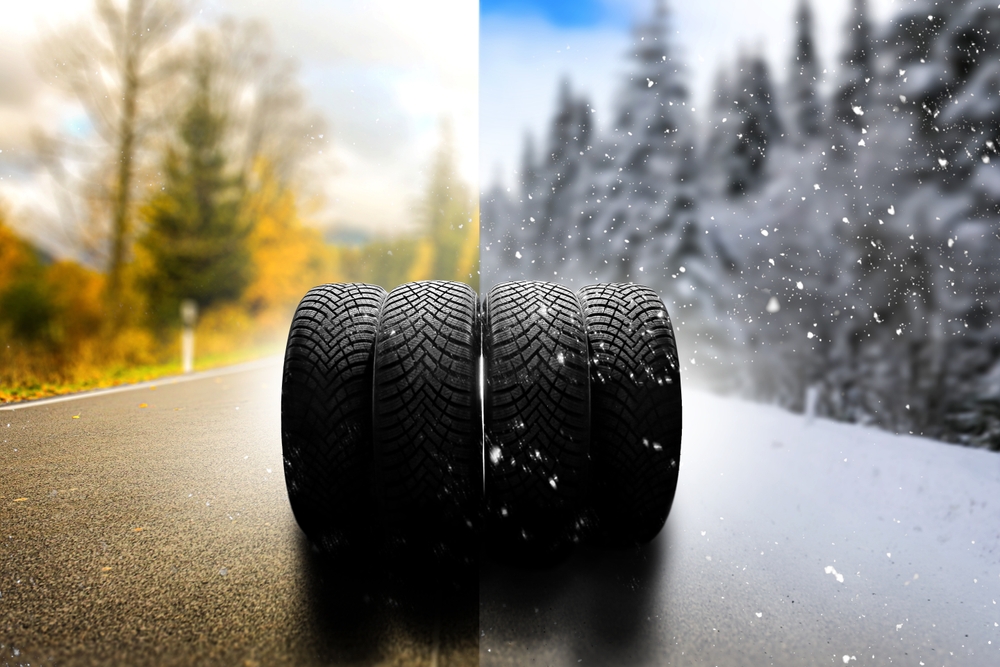When it’s time to buy new tires, you’re hit with choices that sound similar but deliver very different results on the road. Should you go with all-season? Do you need winter tires for North Dakota’s icy roads? What about performance tires — are those only for sports cars?
If you’re not sure which tire type fits your driving style, climate, and vehicle, you’re not alone. Let’s break down the differences so you can choose with confidence.
All-Season Tires: The Everyday Standard
All-season tires are designed to handle a wide range of road conditions — dry, wet, and light snow. They’re built for moderate climates and year-round use.
Pros:
- Good tread life
- Quiet, smooth ride
- Fine for spring, summer, and fall in most regions
- Less expensive than specialty tires
Cons:
- Not ideal for harsh winters or icy roads
- Less grip in extreme temperatures (hot or cold)
Best for: Drivers who live in areas with mild winters and want one tire set year-round
Winter Tires: Built for Ice, Snow, and Cold
Winter tires — also known as snow tires — are specifically designed for cold temperatures, snow, slush, and ice. Their rubber stays flexible in freezing weather, and their tread patterns are optimized for grip.
Pros:
- Superior traction in snow and ice
- Better braking performance in winter weather
- Softer rubber compound handles extreme cold well
Cons:
- Wear out faster in warmer temps
- Not designed for dry, warm roads
- Require seasonal changeovers
Best for: North Dakota and Minnesota drivers from late fall through early spring
Performance Tires: For Precision and Grip
Performance tires are made for high-speed handling, cornering, and grip. You’ll often find them on sports cars or performance sedans — but they’re also used by drivers who prioritize road feel and responsiveness.
Pros:
- Excellent handling and cornering
- Better braking in dry conditions
- Designed for speed and responsiveness
Cons:
- Shorter tread life
- Poor traction in snow and ice
- Typically more expensive
Best for: Dry conditions, warmer climates, or vehicles built for sporty performance
How to Choose: Climate, Driving Style, and Safety
Still unsure? Here’s a quick cheat sheet:
| Tire Type | Best For |
| All-Season | Daily drivers in mild climates |
| Winter | Cold-weather drivers in snowy or icy conditions |
| Performance | Drivers who want handling and speed in dry weather |
In North Dakota and Minnesota, winter tires are strongly recommended during the colder months. Even all-wheel-drive vehicles benefit from them when road conditions get slick.
Can I Mix Tire Types?
It’s not recommended. Mixing winter and all-season tires — or performance and all-season — can lead to uneven traction and compromised handling. For safety and performance, use a full set of the same type and brand when possible.
When Should I Switch to Winter Tires?
A good rule of thumb: When temps consistently drop below 45°F, it’s time to switch to winter tires. That’s when all-season rubber starts to stiffen, reducing your grip and braking ability.
Not Sure What You Need? We’ll Help You Choose.
At OK Tire Store, we help drivers across Minnesota and North Dakota find the right tires for their vehicle, road conditions, and budget. Whether you’re commuting in Grand Forks or navigating icy backroads near Bemidji, we’ve got the experience — and inventory — to get you road-ready.
FAQ: Tire Type Questions
Are all-season tires good enough for winter in North Dakota?
They can handle light snow, but they’re not ideal for heavy snow or ice. For safety, winter tires are recommended in harsh winter climates.
How long do winter tires last?
Most last 3–5 seasons depending on how often and how hard they’re driven. Storing them properly in the off-season extends their life.
Can I use winter tires all year?
It’s not a good idea. The softer rubber wears out faster in warm temperatures and may reduce handling in dry conditions.
Are performance tires worth the cost?
If you drive a performance vehicle or enjoy spirited driving in warm, dry weather, they’re worth it. But they’re not built for snow, ice, or daily commuting in winter.

